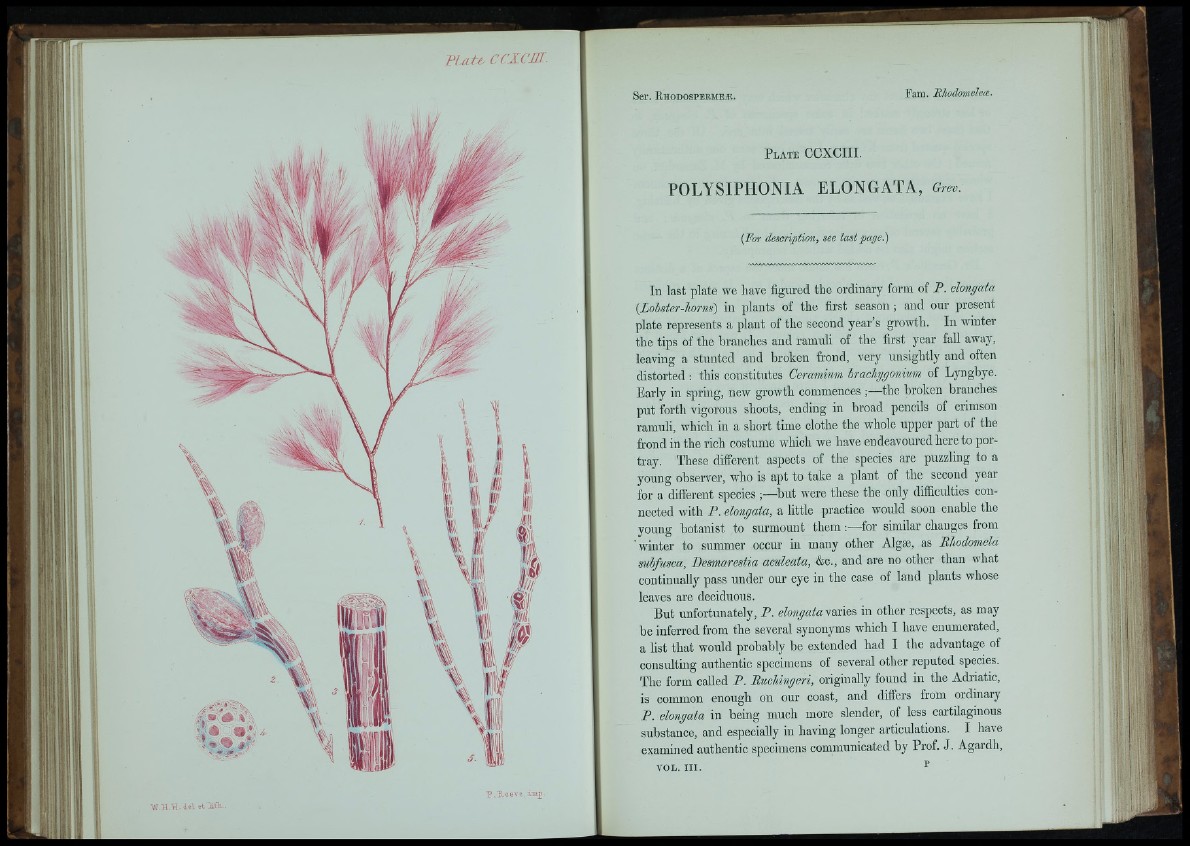
-p i i i t d . c f J c n L
I'i:
' ' é ' • * ' -i-
.■ • » ' • $)■
- r l , " '
P l a t e CCXCIII.
POLYSIPHONIA LLONGATA, Grev.
[For description, see last p a g e )
In last plate we have figured the ordinary form of P . elongata
(Lobster-horns) in plants of the first season ; and our present
plate represents a plant of the second year’s growth. In winter
the tips of the branches and ramuli of the first year fall away,
leaving a stunted and broken frond, very unsightly and often
distorted : this constitutes Ceramkm brachygonium of Lyngbye.
Early in spring, new growth commences ;—the broken branches
put forth vigorous shoots, ending in broad pencils of crimson
ramuli, which in a short time clothe the whole upper part of the
frond in the rich costume which we have endeavoured here to portray.
These different aspects of the species are puzzling to a
young observer, who is apt to take a plant of the second year
for a different species but were these the only difficulties connected
with P. elongata, a little practice would soon enable the
young botanist to surmount them for similar changes from
winter to summer occur in many other Algæ, as Phodomela
suhfusca, Desmarestia aculeata, &c., and are no other than what
continually pass under our eye in the case of land plants whose
leaves are deciduous.
But unfortunately, P. elongataYivnRS in other respects, as may
be inferred from the several synonyms which I have enumerated,
a list that would probably be extended had I the advantage of
consulting authentic specimens of several other reputed species.
The form called P . Euehingeri, originally found in the Adriatic,
is common enough on our coast, and differs from ordinary
P . elongata in being much more slender, of less cartilaginous
substance, and especially in having longer articulations. I have
examined authentic specimens communicated by Prof. J. Agardh,